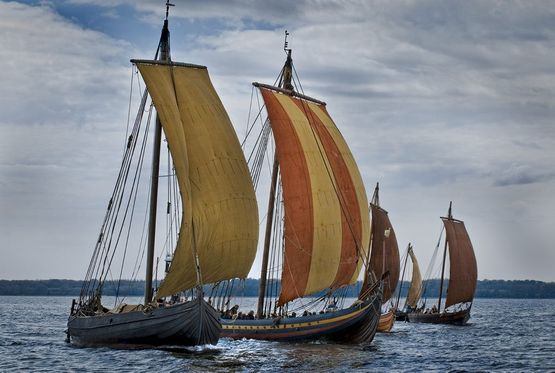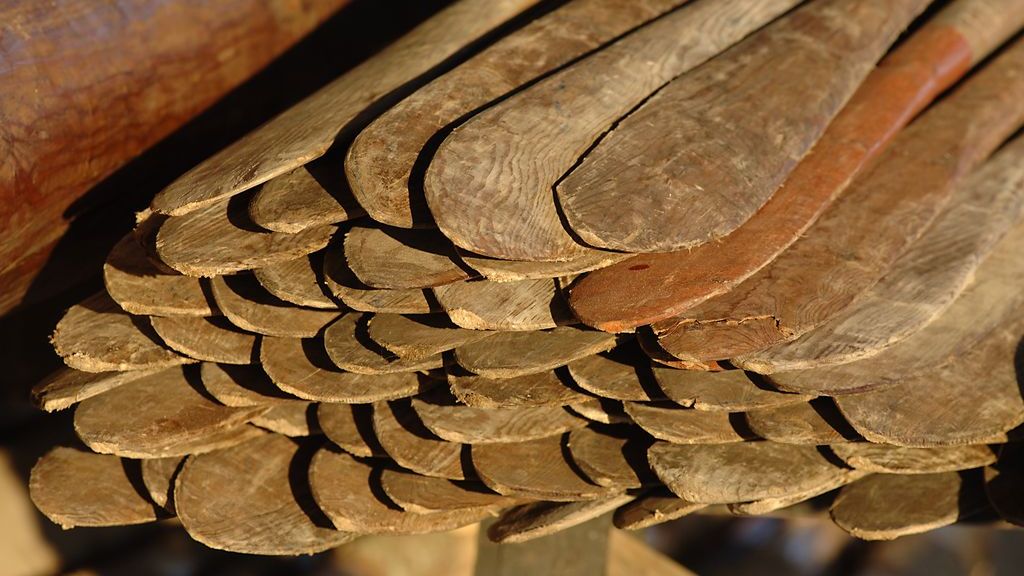Nordic Clinker Boat Traditions and Coastal Culture
The history of Clinker Boats in the Nordic region stretches back at least two millennia. Throughout this time, the Clinker Boat in all its variations has been a vital tool for fishing, freight, farming and shipping in the entire Nordic region. These traditions of Clinker Boats is an essential part of our shared Nordic cultural history, and we consider it to be immensely important to preserve them for posterity.
The Nordic Clinker Boats
The Clinker Boat is defined by its building technique where relatively thin planks are fastened to a backbone of keel and stems. The planks overlap and are fastened together with metal rivets, treenails, or (in earlier times) lashings. The shell is stabilized and strengthened by ribs inserted into the shell. Shape is governed by key measurements and by eye. No plans or paper are used. While this building method is shared by all the Clinker Boats in the Nordic region, the boats themselves differ in looks and sea characteristics according to the district where they were built. Today, as traditionally, the boatbuilder creates the boat following local customs which have developed in close relationship with the surrounding maritime and coastal environment, while also considering the buyer’s needs and the boat’s planned usage. The proximity of the right natural resources is key: the boatbuilder sources the trees he will use in the forest and has exacting standards for the quality of the material. The necessary knowledge and manual skills were taught from master to apprentice, often in the same family. Today, a few individuals and organizations still hold these skills and are taking on apprentices thus keeping these traditions alive.
Living Heritage and Protection Through Usage
Whilst the traditional boat types are no longer in active use in the coastal farming and fishing communities, they are highly regarded as leisure craft. Traditional boat builders, associations and museums are continuing to pass on knowledge about building practices. Practical knowledge of the usage of the boats is passed on through activities such as rowing, sailing, fishing, regattas and other leisure activities. There is still a strong affinity between the local boat types and the people, where using the boats contributes to a feeling of belonging to the landscape.
Efforts to Ensure Visibility, Awareness and Dialogue
As a continuation of our long tradition of cooperation across Nordic national borders, when it comes to safeguarding our common maritime heritage, the communities that are keeping these traditions alive in all the Nordic countries have come together to nominate the Nordic Clinker Boat Traditions for inscription on UNESCOS Representative List of the Intangible Cultural Heritage of Humanity. Achieving this would contribute significantly to ensuring visibility and awareness of the importance of safeguarding the Intangible Cultural Heritage in general and the Clinker Boat Traditions in particular.
This Nordic Nomination Project is part of the work is being done to uphold UNESCOs Convention for the Safeguarding of the Intangible Cultural Heritage that all the Nordic countries have ratified.
Partners, Communities involved and Stakeholders
So far, more than two hundred consenters are behind this nomination process. They include boatbuilders, communities, groups, museums, associations and individuals – all of them bearers of the tradition of Clinker Boats, that are actively safeguarding it through their work or voluntary activities.



